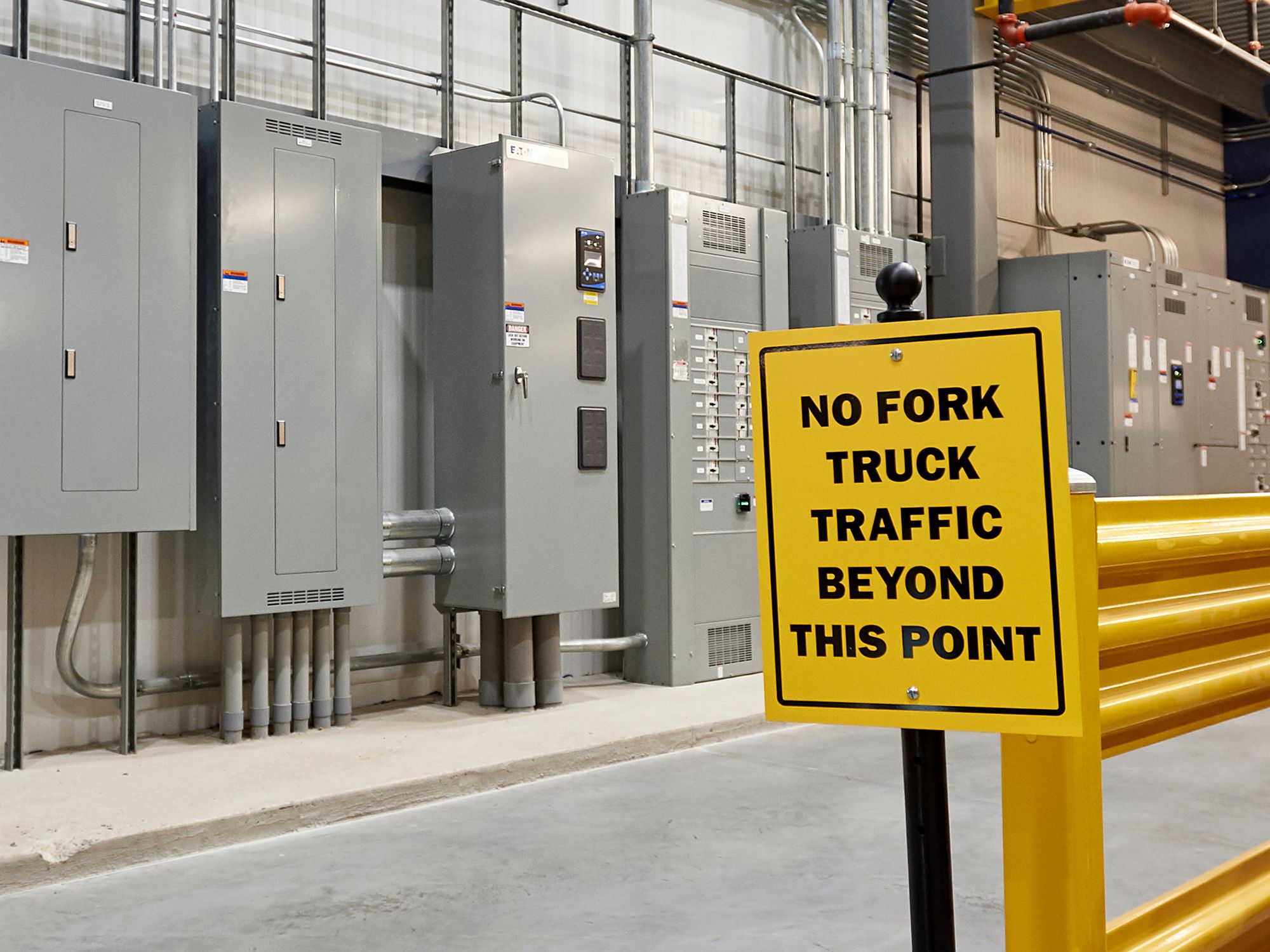Spacing and grounding requirements for electrical equipment

- Sufficient access and workspace must be provided around all electrical equipment.
- GCFIs shut off electricity when a current leakage is detected, which can prevent electrocution, but not all risk of electric shock.
- Assured equipment grounding programs require regular inspection and testing of certain electrical equipment.
How much space must be maintained around electrical equipment?
Employers are required to provide and maintain sufficient access and working space around all electric equipment. A certain amount of space is needed to operate the equipment and to perform any needed maintenance. The electrical equipment must be readily accessible.
Depending on the voltage and the condition (e.g., exposed wiring) the minimum clear distance needed in front of the panel is 3 feet. The width of working space in front must be the width of the equipment or 30 inches, whichever is greater. In addition, the working space must allow a 90-degree opening of equipment doors or hinged panels.
Refer to Table S-1 for the minimum depth of clear working space for 600 volts or less and Table S-2 for over 600 volts.
The workspace must be clear and not used for storage. If indoors, it must extend from the grade, floor, or platform to a height 6 feet above the equipment or to the structural ceiling, whichever is lower. Necessary control equipment is permitted in the dedicated space.
Is ground-fault circuit interrupter protection needed?
The ground-fault circuit interrupter (GFCI) is a fast-acting device which senses small current leakage to ground and, in a fraction of a second, shuts off the electricity and interrupts its faulty flow to ground. The rapid response of the GFCI is fast enough to prevent electrocution and this protection is independent of the condition of the ground conductor.
A GFCI can prevent an electrocution; however, it cannot by itself prevent an electric shock to an employee before it interrupts the circuit. This initial shock could lead to injuries of an indirect or secondary nature in which involuntary muscular reaction could cause bruises, bone fractures, and even death resulting from collisions or falls. Therefore, GFCIs are in addition to, and not in lieu of, equipment grounding conductor requirements.
Is an assured equipment grounding program needed?
- Employers should implement an assured equipment grounding conductor program, which requires inspection and testing of cord sets, receptacles that are not a part of the building or structure, and equipment connected by cord and plug that are available for use or used by employees on those receptacles. This testing must be done every three months, except for cord sets and receptacles which are fixed and not exposed to damage, which should be tested at least every six months.
